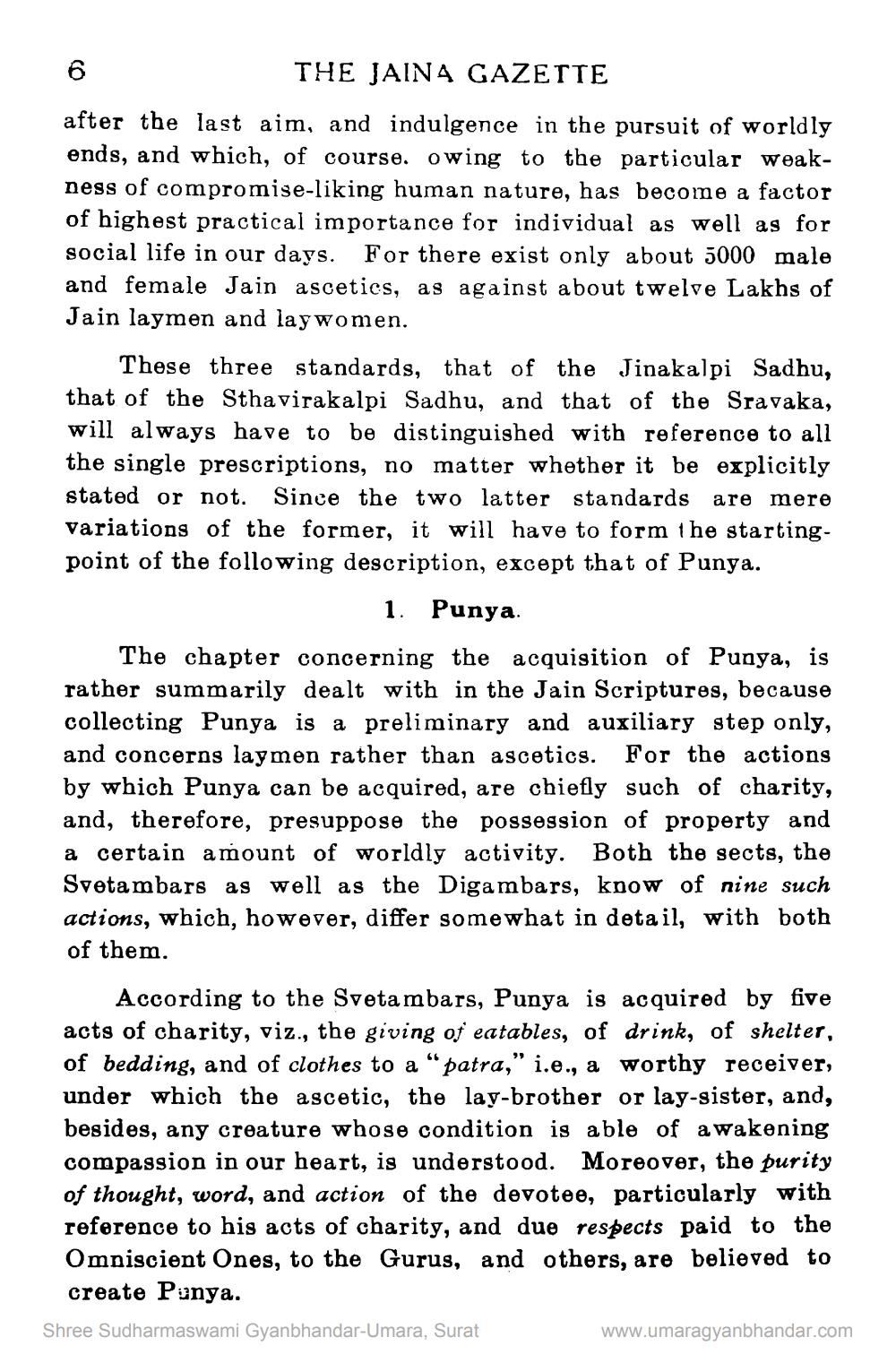________________
THE JAINA GAZETTE
after the last aim, and indulgence in the pursuit of worldly ends, and which, of course. owing to the particular weakness of compromise-liking human nature, has become a factor of highest practical importance for individual as well as for social life in our days. For there exist only about 5000 male and female Jain ascetics, as against about twelve Lakhs of Jain laymen and laywomen.
These three standards, that of the Jinakalpi Sadhu, that of the Sthavirakalpi Sadhu, and that of the Sravaka, will always have to be distinguished with reference to all the single prescriptions, no matter whether it be explicitly stated or not. Since the two latter standards are mere variations of the former, it will have to form the startingpoint of the following description, except that of Punya.
1. Punya The chapter concerning the acquisition of Punya, is rather summarily dealt with in the Jain Scriptures, because collecting Punya is a preliminary and auxiliary step only, and concerns laymen rather than ascetics. For the actions by which Punya can be acquired, are chiefly such of charity, and, therefore, presuppose the possession of property and a certain amount of worldly activity. Both the sects, the Svetambars as well as the Digambars, know of nine such actions, which, however, differ somewhat in detail, with both of them.
According to the Sveta mbars, Punya is acquired by five acts of charity, viz., the giving of eatables, of drink, of shelter, of bedding, and of clothes to a “patra," i.e., a worthy receiver, under which the ascetic, the lay-brother or lay-sister, and, besides, any creature whose condition is able of awakening compassion in our heart, is understood. Moreover, the purity of thought, word, and action of the devotee, particularly with reference to his acts of charity, and due respects paid to the Omniscient Ones, to the Gurus, and others, are believed to
create Punya. Shree Sudharmaswami Gyanbhandar-Umara, Surat
www.umaragyanbhandar.com




